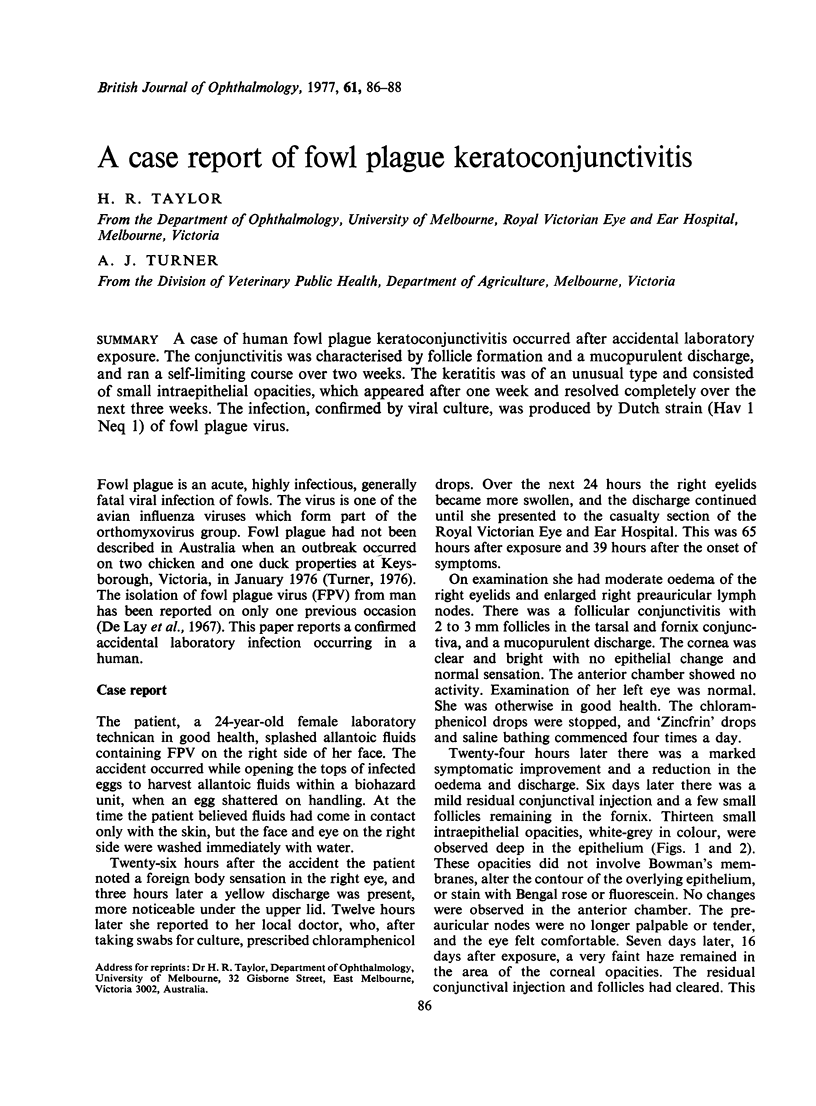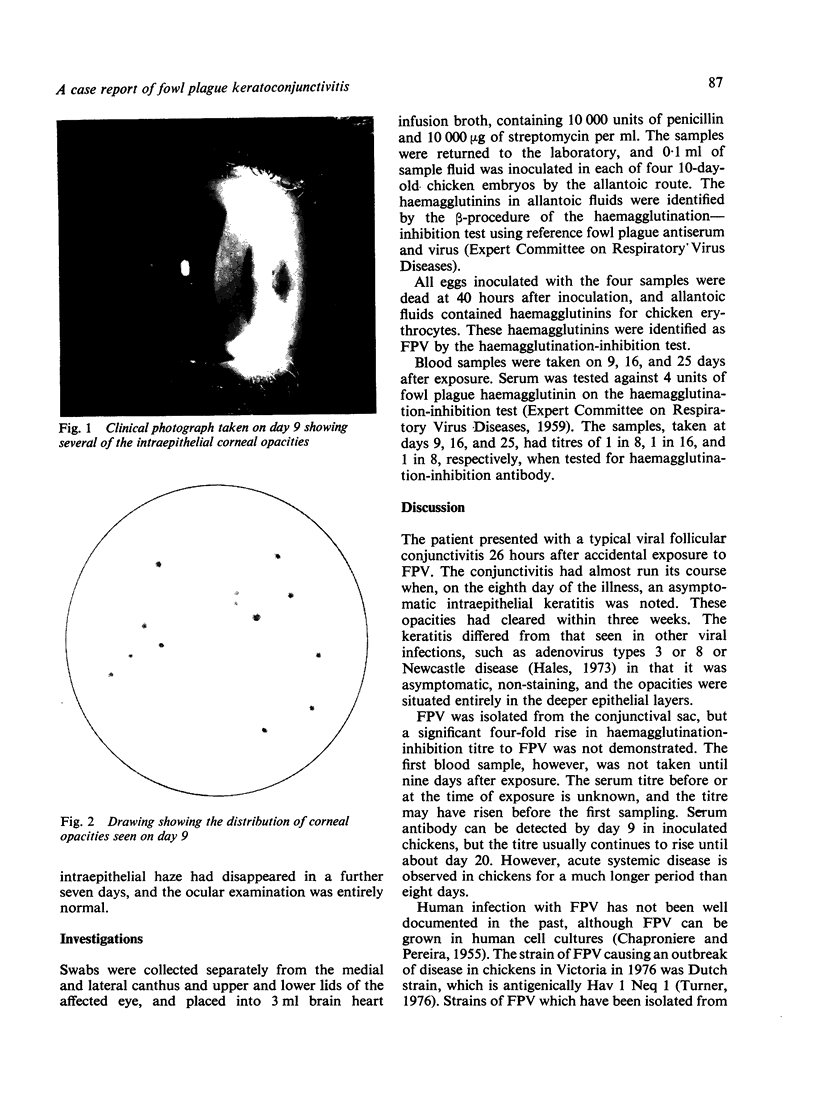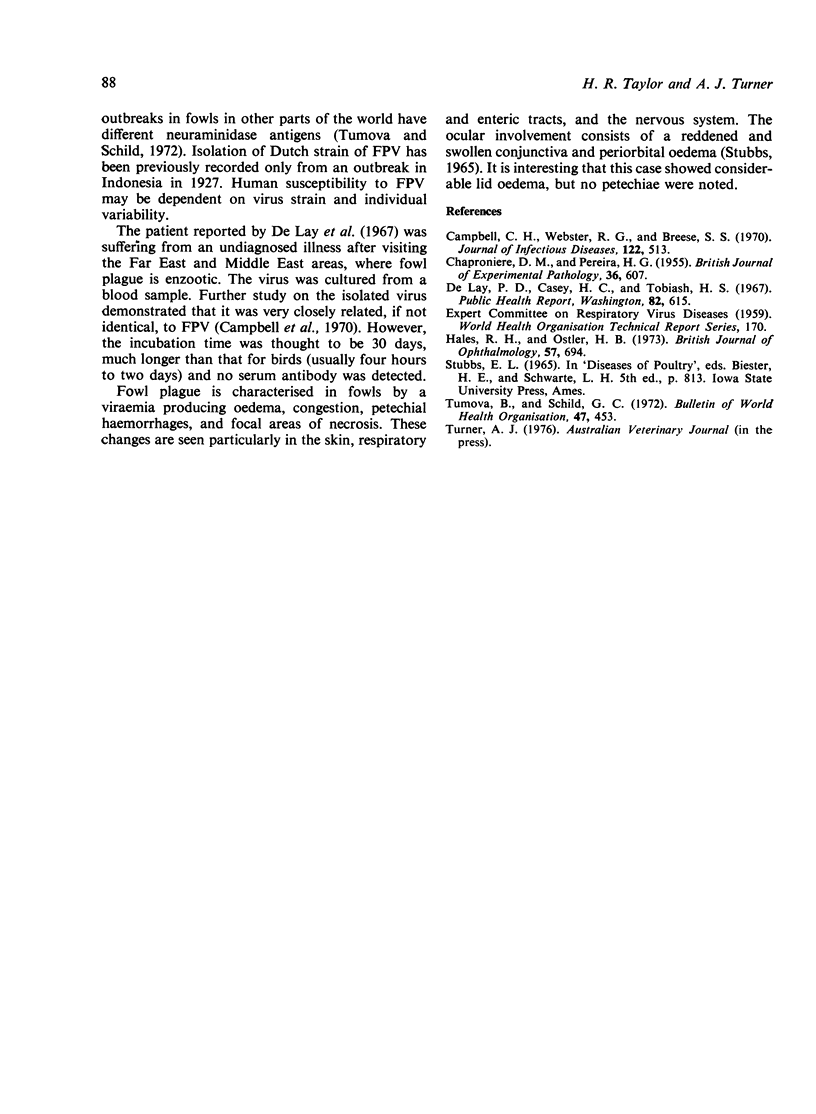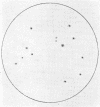Abstract
A case of human fowl plague keratoconjunctivitis occurred after accidental laboratory exposure. The conjunctivitis was characterised by follicle formation and a mucopurulent discharge, and ran a self-limiting course over two weeks. The keratitis was of an unusual type and consisted of small intraepithelial opacities, which appeared after one week and resolved completely over the next three weeks. The infection, confirmed by viral culture, was produced by Dutch strain (Hav 1 Neq 1) of fowl plague virus.
Full text
PDF


Images in this article
Selected References
These references are in PubMed. This may not be the complete list of references from this article.
- CHAPRONIERE D. M., PEREIRA H. G. Propagation of fowl plague and of Newcastle disease viruses in cultures of embryonic human lung. Br J Exp Pathol. 1955 Dec;36(6):607–610. [PMC free article] [PubMed] [Google Scholar]
- Campbell C. H., Webster R. G., Breese S. S., Jr Fowl plague virus from man. J Infect Dis. 1970 Dec;122(6):513–516. doi: 10.1093/infdis/122.6.513. [DOI] [PubMed] [Google Scholar]
- DeLay P. D., Casey H. L., Tubiash H. S. Comparative study of fowl plague virus and a virus isolated from man. Public Health Rep. 1967 Jul;82(7):615–620. [PMC free article] [PubMed] [Google Scholar]
- Hales R. H., Ostler H. B. Newcastle disease conjunctivitis with subepithelial infiltrates. Br J Ophthalmol. 1973 Sep;57(9):694–697. doi: 10.1136/bjo.57.9.694. [DOI] [PMC free article] [PubMed] [Google Scholar]
- Tumová B., Schild G. C. Antigenic relationships between type a influenza viruses of human, porcine, equine, and avian origin. Bull World Health Organ. 1972;47(4):453–460. [PMC free article] [PubMed] [Google Scholar]




